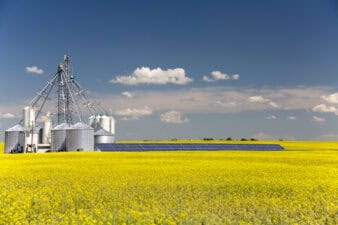Thanks to the recent oil price decline and the subsequent depression in energy shares, some extremely enticing yields have become available on the TSX. Before rushing to buy, investors need to be aware that the 8+% yields currently available can be a double-edged sword.
On one hand, in the past 40 years dividend payers have outperformed their non-dividend paying peers, with dividend payers earning 9.5% annually compared to non-dividend payers. In the volatile energy sector, dividends can significantly reduce volatility, mitigate share price declines, and enhance upside.
On the other hand, there is a catch—the dividend needs to be sustainable. A dividend cut not only reduces total returns through a lower yield, but it can also send shares plummeting, as yield-focused investors sell and individual and institutional shareholders sit on the sidelines.
Currently, Crescent Point Energy Corp. (TSX:CPG)(NYSE:CPG) and Baytex Energy Corp. (TSX:BTE)(NYSE:BTE) lead the TSX in terms of yield among oil-weighted peers, with yields of 9% and 10.20%, respectively. Let’s take a careful look at the sustainability of each of these yields.
Crescent Point’s hedging program secures its dividend—for now
Starting with Crescent Point, the company reported $2.4 billion in cash flow from operations in 2014. This represented 17% year-over-year growth from the $2.04 billion in cash flow reported in 2013, despite a 55% drop in WTI prices. This may seem impossible, but it isn’t thanks to Crescent Point’s conservative hedging program.
Crescent Point maintains a 3.5-year hedging program. In 2015 the company has 56% of production hedged at US$89/bbl. These hedges gained $880 million in 2014, effectively covering the $834 million cash dividend.
Without these hedges, Crescent Point would have seen only $1.5 billion in cash flow, and with $2.1 billion in capital expenditures on top of the $834 million dividend, the company would have needed to rely extensively on debt.
Crescent Point’s hedges should once again cover the dividend in 2015, and the company also has an additional $2.7 billion in unused capacity on its credit facility. Combined, these features will allow Crescent Point to withstand another year or two of oil price weakness before needing to re-evaluate its dividend policy.
Major cost reductions secure Baytex’s dividend at current oil prices
Baytex Energy, with its 10.20% yield, boasts perhaps the largest yield on the TSX that is also sustainable. This, however, came at great cost. In December 2014 Baytex reduced its annual dividend by a massive 60% from $0.24/share to $0.19/share.
This dividend reduction was followed up in February by a $75 million reduction in 2015’s capital expenditures guidance from the previous guidance of $575-650 million, which was 25% lower than 2014’s capital expenditures.
On top of this, Baytex recently completed a $575 million equity issue to reduce its $2.1 billion in net debt—one of the highest in the sector—which it incurred from its 2014 purchase of Aurora Oil and Gas. This equity issue, though expensive for shareholders due to dilution, brought Baytex’s balance sheet to reasonable levels.
The result is that Baytex is fully capable of supporting its $240 million dividend. The company is largely expected to produce a balanced, or near balanced, budget in 2015 at current price levels, and if prices fall, Baytex now has a largely unused $1.2 billion credit facility thanks to the proceeds of its recent equity issue being used to reduce its balance.
With a net debt-to-total capitalization of 36%, Baytex has the liquidity to maintain its dividend should low oil prices persist or fall slightly, while its high sensitivity to oil prices also gives it the potential to raise its dividend should oil prices cover.








